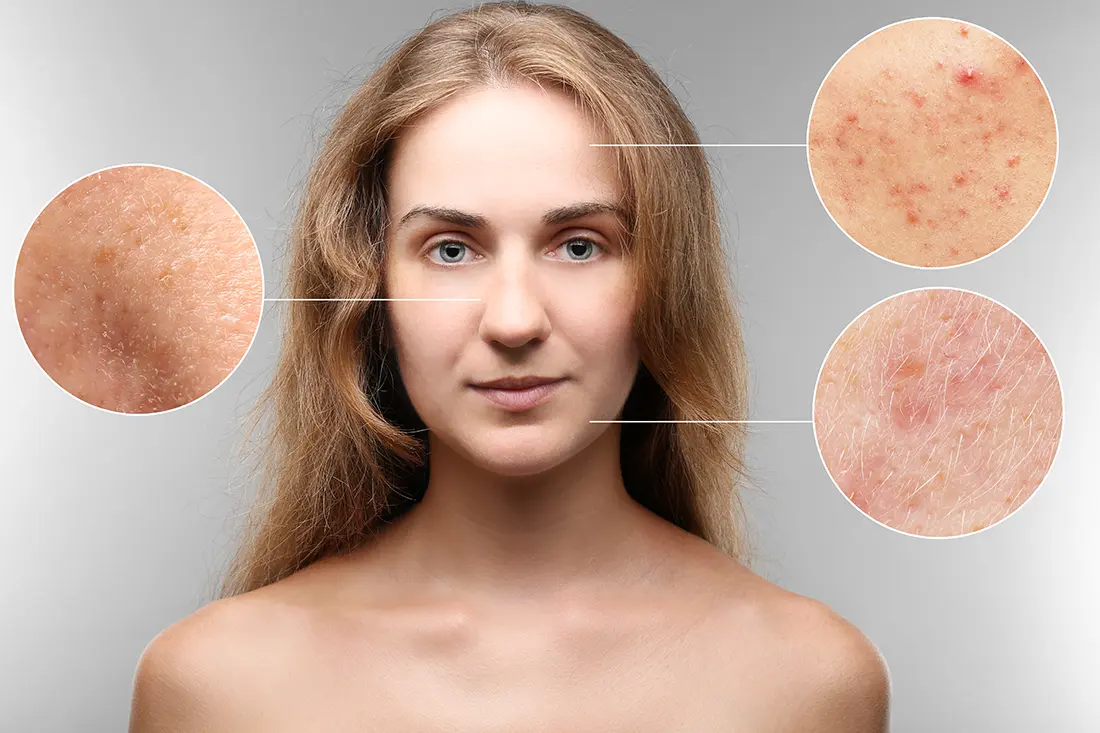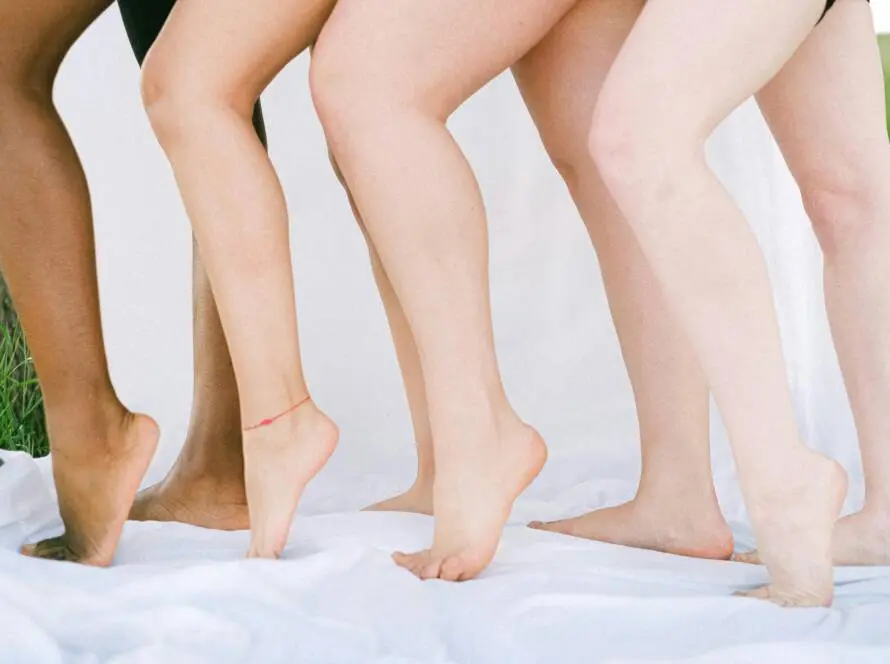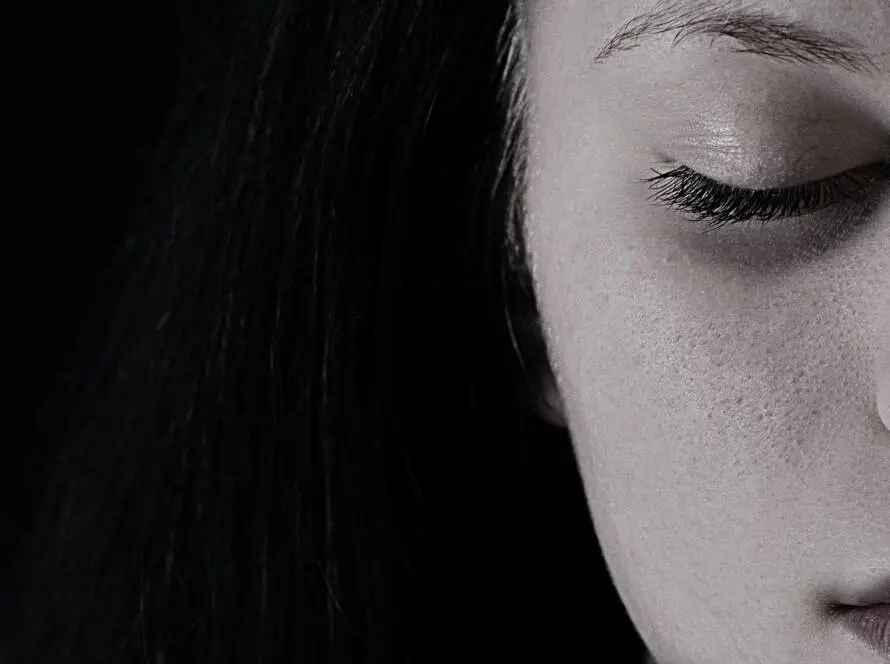How To Choose The Right Acne Treatment or Acne Products For YOU – our guide to acne.
Dealing with acne can feel like an endless battle. You might find yourself trying countless skincare products, following complex skincare routines, and still waking up to new breakouts. It can be frustrating, disheartening, and, at times, overwhelming.
But what if we told you that understanding the root causes of acne could be your game-changer? Acne isn’t just a surface-level issue; it often reflects what’s happening inside your body. Hormones, diet, stress, and even sleep patterns can play a significant role in stubborn spots, persistent pimples and painful pustules or cysts.
In this blog, we’ll take a look at the real culprits behind acne and explore effective science-backed treatments to tackle it head-on. We’re here to arm you with the knowledge and tools you need for clearer, healthier skin. Say goodbye to the endless cycle of trial and error—it’s time to get to the root of the problem and reclaim your skin’s natural glow.
So let’s begin by looking at what acne is and why we get it…
Acne is a common skin condition that affects most teenagers, so it’s often seen as an adolescent issue. However, it can persist well into adulthood. Genetics play a significant role too; if your parents had acne, you might have a genetic predisposition to it as well. This condition can affect both men and women intermittently for many years, taking a toll on self-confidence at any age. If you suffer from acne, remember: you are certainly not alone.
Acne manifests through blackheads and whiteheads, collectively known as comedones. These occur due to the overstimulation of the sebaceous glands. When acne-causing bacteria proliferate, sufferers can develop red, raised, pus-filled spots called pustules—the typical acne spot—or small, raised bumps under the skin known as papules.
More severe forms of acne can develop into cysts or nodules, which carry the risk of permanent scarring. While acne most commonly appears on the face, particularly on the cheeks and forehead, it can also affect the neck, chest, and back.
Hormones and their role in acne breakouts
The sebaceous glands in our skin, nestled next to hair follicles, produce oil or sebum to keep our skin and hair lubricated. However, these glands are highly sensitive to hormones, especially in people with acne. Even normal hormone levels can trigger these glands to produce excessive oil, leading to greasy skin.
Simultaneously, the pores’ lining thickens, preventing dead skin cells from shedding properly. This results in a buildup of sebum and dead skin cells, clogging the skin and forming blackheads and whiteheads. The black colour of blackheads isn’t due to dirt but rather the exposure of the clog’s contents to the air.
Now, what are the different types of acne and how do they present themselves?
Mild acne is classified as having fewer than 20 whiteheads or blackheads, fewer than 15 inflamed bumps, or fewer than 30 total lesions. For this type, over-the-counter topical medications are typically recommended, with noticeable improvements expected within about eight weeks.
Moderate acne includes 20 to 100 whiteheads or blackheads, 15 to 50 inflamed bumps, or 30 to 125 total lesions. Dermatologists often suggest prescription medications for moderate to severe cases. Improvement can take several weeks, and it’s common for acne to initially worsen before getting better.
Acne Conglobata is a severe form of acne characterized by multiple interconnected inflamed nodules under the skin. It can appear on the neck, chest, arms, and buttocks, often leading to scarring. This form of acne is more common in males and can be triggered by steroid or testosterone use. Prompt treatment by a dermatologist is crucial to manage this condition.
Acne Mechanica, caused by friction, heat, and pressure on the skin, often results from wearing athletic gear like helmets or caps. Sometimes referred to as “sports-related acne,” it is frequently seen in athletes. Preventative measures such as wearing absorbent material under sports equipment and showering immediately after exercise can help.
Severe Nodulocystic Acne is characterized by numerous inflamed cysts and nodules, which can turn deep red or purple and cause scarring. Immediate treatment by a dermatologist is essential to minimize scarring. In some cases, doctors may inject corticosteroids directly into nodules and cysts to reduce their size and painful inflammation.
Understanding these different types of acne and their treatments can help you navigate the path to clearer skin. Whether you’re dealing with mild blackheads or severe cystic acne, the right approach can make all the difference.
Now you’re a little bit closer towards identifying your acne, let’s consider the reasons why you might have it.
Hormones: The Main Culprit
One of the primary reasons for acne is hormonal fluctuations. During puberty, the body undergoes significant hormonal changes that can cause sebaceous glands to produce more oil or sebum. This excess oil can clog pores, leading to acne. These changes aren’t just limited to teenagers; they can also affect adults, particularly women during menstrual cycles, pregnancy, or menopause.
Genetics: Family Ties
If your parents had acne, there’s a higher chance you might experience it too. Genetics play a significant role in how your skin behaves, including how much oil your sebaceous glands produce and how prone you are to inflammation and clogged pores.
Bacteria: The Unseen Enemy
Our skin is home to various bacteria, including Cutibacterium acnes (formerly known as Propionibacterium acnes). Normally harmless, this bacteria can thrive in the oily environment of clogged pores, leading to inflammation and the formation of pimples, pustules, and cysts.
Lifestyle Factors: Diet and Stress
What you eat and your stress levels can also influence acne. Diets high in refined sugars and dairy can trigger breakouts in some people. Stress increases the production of cortisol, a hormone that can exacerbate acne by increasing oil production and inflammation.
External Factors: Skincare and Environment
Using the wrong skincare products can clog skin and worsen acne. Look for non-comedogenic products that have this effect. Environmental factors, such as pollution and humidity, can also contribute to acne by increasing oil production and clogging skin with dirt and grime.
Understanding Acne Mechanica
Acne mechanica is caused by friction, heat, and pressure on the skin, often from athletic gear like helmets or tight clothing. This is common in athletes but can be managed by wearing breathable fabrics and showering immediately after sweating.
Medications and Health Conditions
Certain medications, including steroids and hormonal treatments, can cause acne as a side effect. Additionally, underlying causes and health conditions such as polycystic ovary syndrome (PCOS) can also lead to breakouts due to hormonal imbalances.
With all of these answers in mind – what are some of the best-proven solutions for acne treatment?
Medical Grade Skincare
Explanation: Medical grade skincare products are formulated with higher concentrations of active ingredients compared to over-the-counter products. These products are designed to penetrate deeper into the skin, targeting specific skin concerns such as acne more effectively.
How They Help: Medical grade skincare can include potent ingredients like retinoids, salicylic acid, and benzoyl peroxide that help unclog pores, reduce inflammation, and kill acne-causing bacteria. Because of their higher efficacy, they can deliver faster and more noticeable results, making them a powerful option for treating persistent acne.
Medical Skin Peels
Explanation: Medical skin peels, also known as chemical peels, involve applying a chemical solution to the skin to exfoliate and remove the top layers. This process reveals fresher, clearer skin underneath.
How They Help: By removing the outer layers of skin, medical skin peels can help unclog pores and reduce the appearance of acne scars. They also promote cell turnover, which helps in preventing future breakouts. Peels containing salicylic acid or glycolic acid are particularly effective in treating acne-prone skin.
Antibiotic Treatment
Explanation: Antibiotic treatment for acne typically involves topical or oral antibiotics that reduce bacteria and inflammation on the skin.
How They Help: Antibiotics like clindamycin or lymecycline work by decreasing the number of acne-causing bacteria (Cutibacterium acnes) and reducing inflammation. This helps to clear up existing acne lesions and prevent new ones from forming. However, they are usually prescribed for short-term use to avoid antibiotic resistance.
Roaccutane (Isotretinoin)
Explanation: Roaccutane, also known as isotretinoin, is a powerful oral medication used to treat severe acne that hasn’t responded to other treatments.
How It Helps: Isotretinoin works by drastically reducing the size and activity of sebaceous glands, thus significantly decreasing oil production. It also helps prevent clogged pores and reduces inflammation. Because of its potency, Roaccutane can lead to long-term remission of acne, but it requires careful monitoring due to potential side effects.
Photodynamic Therapy (PDT)
Explanation: Photodynamic therapy involves applying a photosensitizing agent to the skin, which is then activated by a specific wavelength of light.
How It Helps: PDT targets and destroys acne-causing bacteria and reduces sebaceous gland activity, leading to less oil production. This dual action helps clear up acne and prevent future breakouts. PDT can also improve skin texture and reduce the appearance of acne scars.
Glycoala PDT
Explanation: Glycoala PDT is a specific type of photodynamic therapy that uses a gel containing a photosensitizing agent called 5-aminolevulinic acid (ALA). Combined with light at a specific wavelength (Red Light) 633nm, this combination of treatments burns off protoporphyrin IX (PPIX) which is highly toxic and creates a Photodynamic response to kill the acne bacteria. The unique GlycoAla gel penetrates into the skin much quicker than other photosensitisers due to its nano-technology and encapsulated glycosphere.
How It Helps to: When activated by light, the ALA gel targets sebaceous glands and acne-causing bacteria, reducing oil production and inflammation, treating acne at its roots. This treatment can lead to significant improvement in acne with minimal downtime. Additionally, Glycoala PDT can enhance skin tone and texture, providing a comprehensive approach to acne management.
But wait, are you really qualified to self-diagnose?
The answer is NO, here’s why only a Dermatologist can diagnose and recommend the right acne treatment for you.
Accurate diagnosis is crucial for effective acne treatment. If you are dealing with acne, an experienced dermatologist will diagnose you by examining the breakouts on your skin.
During the examination, they will identify the type of acne you have and where it is located on your skin. Different forms require different forms of treatment.
Sometimes, what appears to be acne may not actually be that. Perioral dermatitis and folliculitis, a skin infection, are both conditions which can be confused with acne. A dermatologist will be able to provide an accurate diagnosis and develop a treatment plan that is specifically tailored to your needs.
Ready for clear skin?
At Blemish Clinic, we take pride in being a Centre of Excellence for acne and providing a wide variety of treatments to help manage and improve your skin, giving you back control. Jan Birch, the owner of Blemish Clinic and a Dermatology Specialist Consultant Nurse, has a special interest in all aspects of acne treatment.
Our in-clinic treatments include topical creams, effective skincare programs, medical facials, skin peels, IPL therapy, antibiotics, phototherapy with blue and red LED lights, and GlycoAla PDT – a photodynamic therapy using a sensitizing cream alongside light. Additionally, we offer a Roaccutane Service for severe acne that has not responded to traditional treatments.
In addition to receiving treatments at the clinic, there are several at-home options available under medical supervision to help improve and control acne, such as the use of medical-grade skincare products and portable phototherapy devices.
Our acne treatment centre partners with medical companies to assist in product development, ensuring that sufferers have access to the latest advanced technologies for managing their condition. With numerous misconceptions surrounding the causes and treatment of acne, our goal is to provide you with the knowledge needed to address your skin concerns early on to prevent potential long-term consequences like scarring.
Conclusion – there is no need to keep struggling with acne. A speedy diagnosis along with an effective treatment plan, will help you to get control of your skin and feel great again! Book a Dermatology Consultation here now.




